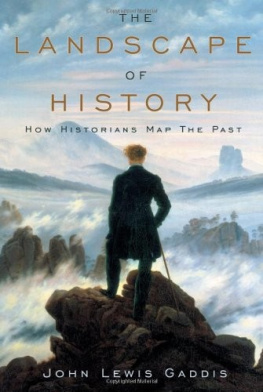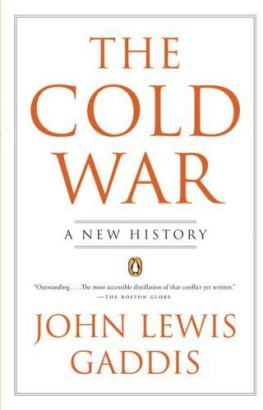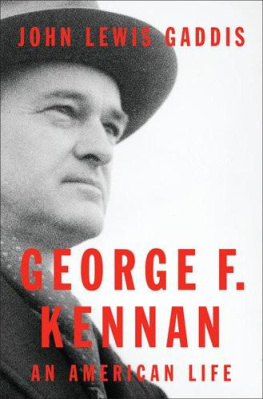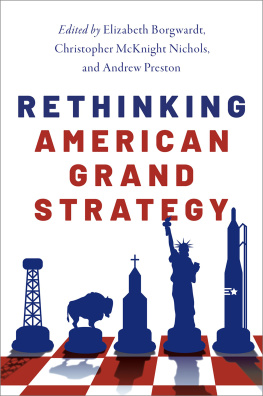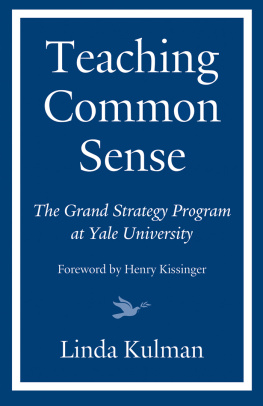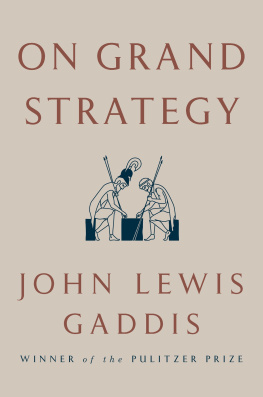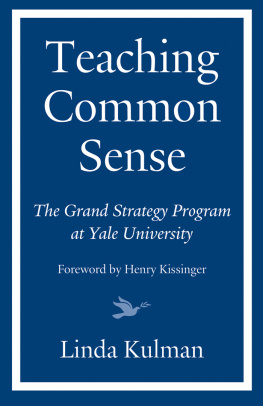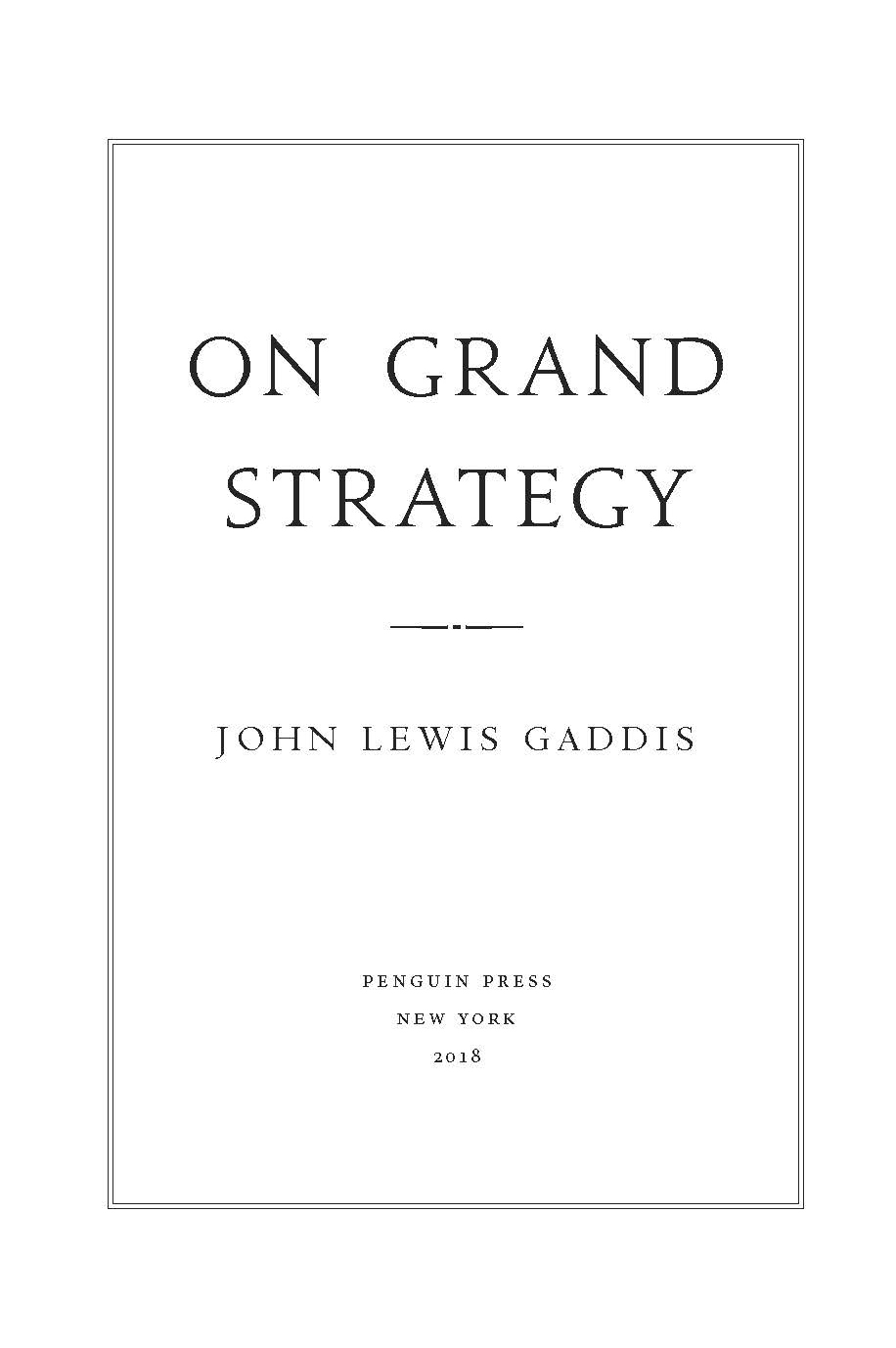Penguin supports copyright. Copyright fuels creativity, encourages diverse voices, promotes free speech, and creates a vibrant culture. Thank you for buying an authorized edition of this book and for complying with copyright laws by not reproducing, scanning, or distributing any part of it in any form without permission. You are supporting writers and allowing Penguin to continue to publish books for every reader.
While the author has made every effort to provide accurate telephone numbers, Internet addresses, and other contact information at the time of publication, neither the publisher nor the author assumes any responsibility for errors or for changes that occur after publication. Further, the publisher does not have any control over and does not assume any responsibility for author or third-party websites or their content.
NICHOLAS F. BRADY, 52
CHARLES B. JOHNSON, 54
PREFACE
The title, I know, risks raising eyebrows. But my Yale History Department colleague Timothy Snyder has preceded me (On Tyranny), as has, more distantly, Seneca (Onthe Shortness of Life). Im most worried, though, about admirers of Carl von Clausewitz, being one myself. His posthumously published On War (1832) set the standard for all subsequent writing on that subject and its necessary corollary, grand strategy. My justification for yet another such book is concisionnot one of Clausewitzs strengths: On Grand Strategy covers more years than On War, but at less than half the length.
It grows out of two experiences with grand strategy, separated by a quarter century. The first was teaching Strategy and Policy at the United States Naval War College from 1975 to 1977, under circumstances described at the end of chapter two. The second has been co-teaching Yale Universitys Studies in Grand Strategy seminar every year from 2002 to the present. Both courses have always relied more on classical texts and historical case studies than on theory. The single-semester Newport seminars, however, are chiefly for midcareer military officers. The two-semester Yale course recruits undergraduate, graduate, and professional school students, as well as, each year, an active-duty Army and Marine Corps lieutenant colonel.
Both courses are collaboratively taught: normally one civilian and one military instructor for each seminar section at Newport, and, at Yale, varying combinations. My colleagues Charles Hill, Paul Kennedy, and I began as a troika, attending all classes, arguing with one another in front of the students, and individually advising them (not always consistently) outside of class. Remarkably, were still neighbors and close friends.
The 2006 establishment of the Brady-Johnson Program in Grand Strategy allowed us to add practitioners: theyve included David Brooks, Walter Russell Mead, John Negroponte, Peggy Noonan, Victoria Nuland, Paul Solman, Jake Sullivan, and Evan Wolfson. The course has also attracted other Yale faculty: Scott Boorman (Sociology), Elizabeth Bradley (formerly School of Public Health, director of the Brady-Johnson program in 201617, now president of Vassar College), Beverly Gage (History and, from 2017, Brady-Johnson program director), Bryan Garsten (Political Science and Humanities), Nuno Monteiro (Political Science), Kristina Talbert-Slagle (Epidemiology and Public Health), and Adam Tooze (formerly History, now at Columbia University).
Together these colleagues have taught me a lot, another reason I feel obliged now to try to say what Ive learned. Ive done so in a way thats informal, impressionistic, and wholly idiosyncratic: my teachers bear no responsibility other than for setting me off on paths they couldnt control. Because I seek patterns across time, space, and scale, whom I got to know slightly while visiting the University of Oxford in 199293. I hope hed be pleased to be considered a grand strategist. I know hed be amused.
My agent, Andrew Wylie, and my editor, Scott Moyers, had greater confidence in this book than I did when I began writing it. Working with them again has been a pleasure, as it has been to benefit once more from the efficiency of the entire Penguin team: Ann Godoff, Christopher Richards, Mia Council, Matthew Boyd, Bruce Giffords, Deborah Weiss Geline, and Juliana Kiyan.
I owe special thanks to the Yale undergraduates in my fall 2017 Foxes and Hedgehogs seminar, whove tough-mindedly test-driven every chapter of this book: Morgan Aguiar-Lucander, Patrick Binder, Robert Brinkmann, Alessandro Buratti, Diego Fernandez-Pages, Robert Henderson, Scott Hicks, Jack Hilder, Henry Iseman, India June, Declan Kunkel, Ben Mallet, Alexander Petrillo, Marshall Rankin, Nicholas Religa, Grant Richardson, Carter Scott, Sara Seymour, David Shimer, and Jared Smith. Ive also had the help of accomplished undergraduate research assistants: Cooper DAgostino, Matthew Lloyd-Thomas, David McCullough III, Campbell Schnebly-Swanson, and Nathaniel Zelinsky.
Yale presidents Richard Levin and Peter Salovey have strongly supported our teaching of grand strategy from the beginningas has Ted Wittenstein, their special assistant and one of our early students. Associate directors in International Security Studies and the Brady-Johnson program have kept us on course: Will Hitchcock, Ted Bromund, the late Minh Luong, Jeffrey Mankoff, Ryan Irwin, Amanda Behm, Jeremy Friedman, Christopher Miller, Evan Wilson, and Ian Johnson; as have the staff we share at 31 Hillhouse: Liz Vastakis, Kathleen Galo, Mike Skonieczny, and Igor Biryukov. My wife, Toni Dorfman, teacher, scholar, mentor, actor, playwright, director of plays and baroque operas, manuscript critic and copy editor, gourmet chef, nightly therapist, and the love of my life, now, for twenty years (!), keeps me together in every way.
The dedication celebrates the two great benefactors of our program, along with one wise facilitator: their vision, generosity, and unvarying good advicenot least that we teach common sensehave been our anchor, our compass, and the vessel itself in which we sail.
JLG
New Haven, Connecticut
Fall 2017
CHAPTER ONE
CROSSING THE HELLESPONT
The date is 480 B.C.E. The place is Abydos, the town on the Asian side of the Hellespont where it narrows to just over a mile in width. The scene is worthy of Hollywood in its heyday. Xerxes, Persias King of Kings, ascends a throne on a promontory from which he can see armies assembled, the historian Herodotus tells us, of over a million and a half men. Had the number been only a tenth of that, as is more likely, it would still have approximated the size of Eisenhowers forces on D-day in 1944. The Hellespont has no bridge now, but Xerxes had two then: one rested on 360 boats lashed together, the other on 314, both curved to accommodate winds and currents. For after an earlier bridge had broken apart in a storm, the furious king beheaded the builders and ordered the waters themselves whipped and branded. Somewhere on the bottom there presumably lie, to this day, the iron fetters he had thrown in for good measure.


